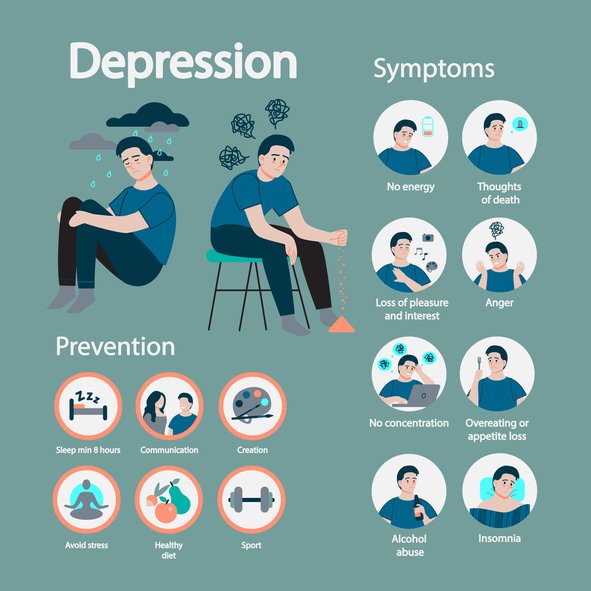Various Depression Treatments Can Assist in Numerous Ways
Depression may seem like too much to handle, but multiple treatments can make symptoms decrease, better coping mechanisms be learned, and overall emotional health improve. They don’t merely cover up the pain—these treatments offer actual tools to assist individuals in taking back control over their lives.

How Treatment for Depression Has Evolved Over Time
Historically, physicians used to divide depression treatments into two groups:
- Medication (for biological reasons, such as chemical imbalances).
- Psychotherapy (for emotional or social reasons, such as trauma or stress).
But this distinction is not as straightforward anymore. Current research indicates that depression is much more complicated. Surprisingly, both therapy and medication produce similar effects in the brain, i.e., they both act on a biological level.
Due to this, treatment professionals now advise psychotherapy as a sound choice for depression, either alone or in addition to medication—regardless of what the “cause” appears to be.
Common Types of Therapy for Depression
Various therapies suit various individuals. These are some of the best-researched and most effective methods:
1. Cognitive Behavioral Therapy (CBT) – Rewiring Negative Thoughts
CBT is one of the most popular and scientifically backed therapies for depression. It helps people recognize harmful thought patterns (like “I’m a failure”) and replace them with more balanced, realistic thoughts (like “I’m struggling right now, but that doesn’t mean I’m a failure”).
- How it works: A therapist assists you in understanding how your actions, emotions, and thoughts are intertwined. For instance, if you think “Nobody likes me,” you may avoid social interactions, which isolate you further—nourishing the depression. CBT guides you to interrupt this cycle.
- Why it works: Research indicates CBT is as effective (or sometimes more effective) than medication. When paired with antidepressants, the effect is usually even greater. And individuals who learn CBT skills are less likely to relapse than individuals who take medication alone.
2. Interpersonal Therapy (IPT) – Repairing Relationship Problems
If depression is tied to relationship problems, grief, or major life changes, IPT can be very helpful. The idea behind IPT is that our mood and our relationships affect each other deeply.
- How it works: Over 12–16 weeks, you’ll work on:
- Identifying conflicts in relationships.
- Improving communication skills.
- Building a stronger support network.
- Real-life evidence: Research in 2020 discovered that individuals with occupational depression performed better with IPT compared to traditional treatment—those receiving IPT felt less depressed and were more capable of dealing with workplace stress.
3. Mindfulness-Based Therapies – Staying Present
Mindfulness therapies (such as MBCT and MBSR) help individuals learn to stay present rather than getting bogged down with the past or future and negative feelings about them.
- How it helps:
- You learn to observe thoughts and emotions without judging them (e.g., “I notice I’m feeling sad right now” instead of “I’m broken because I’m sad”).
- Over time, this reduces the power of negative thinking.
- Great for: People who overthink or ruminate, making depression worse.
4. Dialectical Behavior Therapy (DBT) – Managing Tough Emotions
Originally for borderline personality disorder, DBT is now used for depression too. It mixes CBT with mindfulness and focuses on:
- Emotional regulation (managing mood swings).
- Distress tolerance (sitting out difficult moments without self-sabotaging behaviors).
- Improved relationships (getting needs met without fighting).
Why it helps: So many depressed individuals experience overwhelming feelings—DBT provides them with tools to manage.
5. Psychodynamic Therapy – The Past Revealed
This “old school” therapy (created by Freud and Jung) delves into how repressed emotions and memories from the past may be causing depression now.
- How it works: By discussing childhood, past history of trauma, or repeating patterns of life, individuals develop an understanding of why they feel as they do.
- Contemporary research: Once viewed as less scientific, research now supports psychodynamic therapy can be equal in effectiveness to other therapies for depression.
Which Therapy is Best?
There isn’t one “best” therapy—it just depends on the individual. But CBT is the most studied and is helpful for a broad swath of individuals. Other forms of therapy (such as IPT or DBT) may be more effective if depression is interrelated with relationships or explosive emotions.
Helpful Techniques Used in Therapy
Therapists typically present treatments that encourage skills to combat depression, including:
- Behavioral Activation: Engaging in more pleasurable activities (even when you don’t want to) in order to interrupt the pattern of isolation and depression.
- Problem-Solving Training: Dividing large problems into smaller, workable steps to decrease feelings of helplessness.
- Mood Tracking: Recording daily moods in a log in order to identify triggers and patterns.
- Cognitive Restructuring: Disputing thoughts such as “I’ll never be happy” and replacing them with more realistic ones.
- Mindfulness Exercises: Basic meditation or breathing exercises to quiet an overactive mind.
- Gratitude Journaling: Writing down some good things every day in order to move attention away from negative thoughts.
When Should Medication Be Added?
Therapy by itself is fine for most people, but medication may be useful if:
- Symptoms are really bad (such as not being able to leave the bed).
- Therapy hasn’t helped enough after a few months.
- There is a family history of depression that responded to meds.
Combining therapy + medication is often the most effective approach for long-term recovery.
Final Thoughts
Depression can make life feel hopeless, but therapy provides real, science-backed tools to help people heal. The key is finding the right type of therapy for your needs—whether it’s CBT, mindfulness, or something else. With the right support, recovery is absolutely possible.

